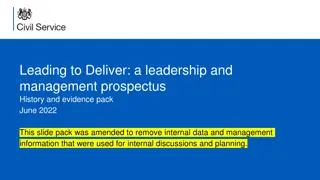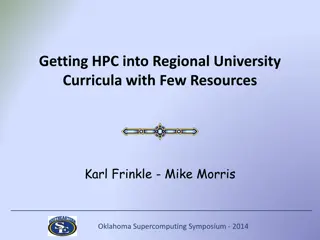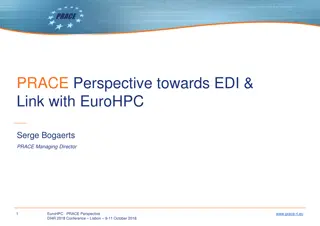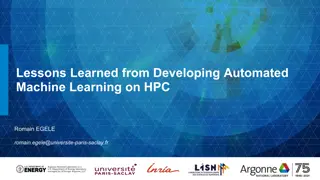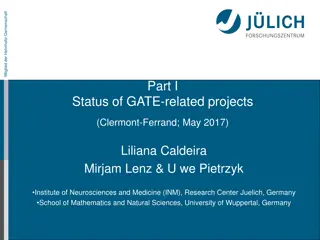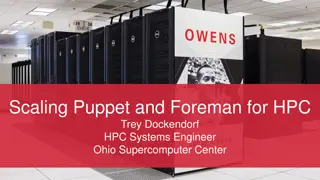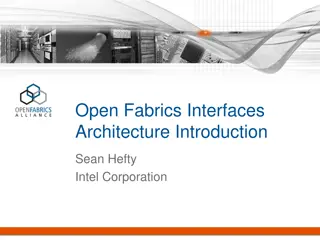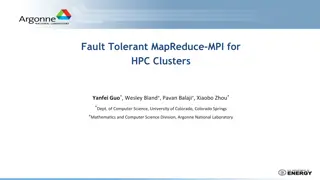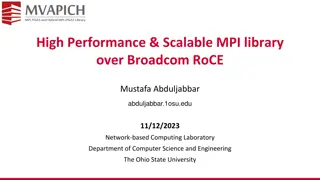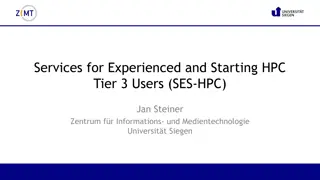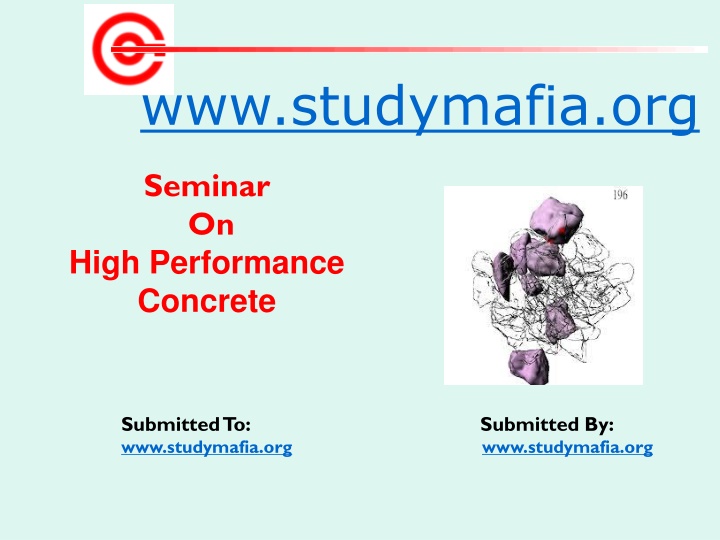
Benefits and Applications of High Performance Concrete for Construction
High Performance Concrete (HPC) offers superior durability and strength compared to conventional concrete. This specialized concrete mixture contains cementious materials like fly ash and silica fume, along with super plasticizers. HPC provides various performance benefits such as ease of placement, long-term mechanical properties, early high strength, and more. Its applications include bridges, high-rise buildings, tunnels, pavements, and nuclear structures. The general characteristics of HPC include high strength, modulus of elasticity, abrasion resistance, low permeability, and resistance to chemical attack. Explore the advantages, limitations, and objectives of utilizing High Performance Concrete in construction projects.
Download Presentation

Please find below an Image/Link to download the presentation.
The content on the website is provided AS IS for your information and personal use only. It may not be sold, licensed, or shared on other websites without obtaining consent from the author. If you encounter any issues during the download, it is possible that the publisher has removed the file from their server.
You are allowed to download the files provided on this website for personal or commercial use, subject to the condition that they are used lawfully. All files are the property of their respective owners.
The content on the website is provided AS IS for your information and personal use only. It may not be sold, licensed, or shared on other websites without obtaining consent from the author.
E N D
Presentation Transcript
www.studymafia.org Seminar On High Performance Concrete Submitted To: www.studymafia.org www.studymafia.org Submitted By:
Content Introduction What is High Performance Concrete? Application Objectives General Characteristics Advantages Limitations Conclusion References
Introduction High performance concrete is a concrete mixture, which possess high durability and high strength when compared to conventional concrete. This concrete contains one or more of cementious materials such as fly ash, Silica fume or ground granulated blast furnace slag and usually a super plasticizer.
What is High Performance Concrete? High Performance Concrete (HPC) is a specialized series of concretes designed to provide several benefits in the construction of concrete structures. Performance Benefits Cost & Other Benefits
Performance Benefits ease of placement and consolidation without affecting strength long-term mechanical properties early high strength toughness volume stability longer life in severe environments
Cost & Other Benefits less material fewer beams reduced maintenance extended life cycle aesthetics
Application BRIDGES HIGH RISE BUILDINGS TUNNELS PAVEMENTS NUCLEAR STRUCTURES
Objectives To put the concrete in to service at much earlier age, for example opening the pavement at 3-days. To build high-rise buildings by reducing column sizes and increasing available space. To build the superstructures of long-span bridges and to enhance the durability of bridge decks. To satisfy the specific needs of special applications such as durability, modulus of elasticity, and flexural strength. Some of these applications include dams, grandstand roofs, marine foundations, parking garages, and heavy industrial floors.
General Characteristics High strength High early strength High modulus of elasticity High abrasion resistance Low permeability and diffusion Resistance to chemical attack Volume stability Ease of placement
Advantages Longer spans and fewer beams for the same magnitude of loading. Reduced axial shortening of compression supporting members. Superior long term service performance under static, dynamic and fatigue loading. Low creep and shrinkage. Greater stiffness as a result of a higher modulus Ec. Reduced maintenance and repairs. Smaller depreciation as a fixed cost.
Limitations High Performance Concrete has to be manufactured and placed much more carefully than normal concrete. An extended quality control is required In concrete plant and at delivery site, additional tests are required. This increases the cost Some special constituents are required which may not be available in the ready mix concrete plants.
Conclusion The water, cementitious materials, aggregates and chemical admixtures all need to be proportioned effectively to deliver the mix with the most desirable properties for placement, finishing, curing, and hardened condition.
References www.studymafia.org www.google.com www.wikipedia.com




